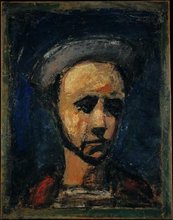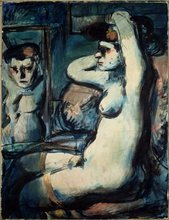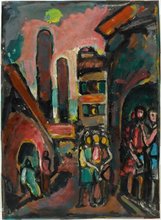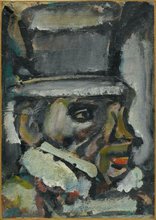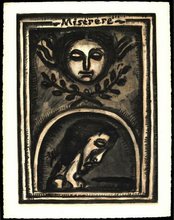Museum
Homage to Georges Rouault
Saintes Colères (Holy Rages)
�9 Jul - �3 Oct 2021
�9 Jul - �3 Oct 2021

The event is over
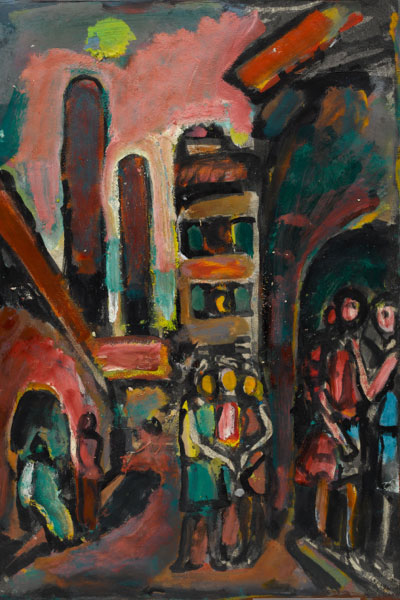
Georges Rouault, « Fille et usine », 1931 © Adagp, Paris, 2021 Photo : ©Philippe Migeat - Centre Pompidou, Mnam-Cci / Dist. RMN-GP
This summer the Centre Pompidou celebrates the 150th anniversary of Georges Rouault (1871-1958), the great painter. Entitled "Saintes Colères", borrowed from a letter the artist wrote to writer André Suarès, this homage brings together some twenty works from the collection of the National Museum of Modern Art. Thanks to the successive donations of the Rouault family, the museum holds one of the largest collections in the world of the painter's work.

Georges Rouault, « Fille et usine », 1931 © Adagp, Paris, 2021 Photo : ©Philippe Migeat - Centre Pompidou, Mnam-Cci / Dist. RMN-GP
In a disenchanted 20th century, proclaiming the death of God, Rouault's religiosity, his pity for the most destitute and his profound humanism distinguish him from the trends of the time. For Pierre Courthion, his biographer, "Rouault's frankness, his manner of protesting against the social and even the moral injustice of civil and secular life, is due to the fact that he always resisted the lies, dissimulation and hypocrisy of society". This feeling of revolt, anger and exasperation, these "holy rages at injustice", resonate in this homage-exhibition.
Showcased at the entrance to the exhibition, his masterpiece, Homo homini lupus (Man is a wolf to man), a disillusioned comment on the human condition, sets the tone for this immersion in the world of the abandoned, those that society ignores or seeks to forget. Léon Bloy (1846-1917), a Catholic writer and fierce exposer of the ungodliness of the bourgeoisie, became an inspirational model for the young Rouault. His paintings of young girls, seated before a mirror or streetwalking on the streets of Belleville, the working-class district of his childhood, owe much to Bloy's books. Some signed copies from Rouault's library are presented in the exhibition, testifying to the close bond between the two artists.
Another striking figure was Ubu Roi, created by Alfred Jarry, addressed by Rouault on several occasions, encouraged by Ambroise Vollard. His illustrations for Les Réincarnations du Père Ubu (The Reincarnations of Père Ubu, 1925) testify to his commitment to questions relative to colonisation.
At the heart of the exhibition we find Rouault's magnum opus, which is rarely presented in full: the 58 engravings of his Miserere cycle, his artistic epic on the tragedy of the Great War, combining profane and biblical motifs. The exhibition highlights how this marathon work, which initially comprised double the number of drawings, became the matrix for a large part of Rouault's production. It marks both the centre and the summit of his art, as he said himself: "I think I gave the best of myself".
This homage is also an opportunity to reveal to the public the latest enrichment of the Rouault collection: L'Accusé (The Accused), an exceptional painting dating from 1908, recently donated to the national collection. A humble man finds himself at the centre of the inexorable mechanism of human justice which, for Rouault the Christian artist, was nothing more than a parody of divine justice. A poignant testimony to the painter's hot-headed beginnings, full of rage and vigour against a society he condemned.
In addition to this homage, a monograph room in the tour of the museum presents a selection of key works from the rich Rouault collection (room 2, Museum, level 5).
Where
Museum, level 5, Focus room
When
�9 Jul - �3 Oct 2021
11am - 9pm, every days except tuesdaysBooking strongly recommended
